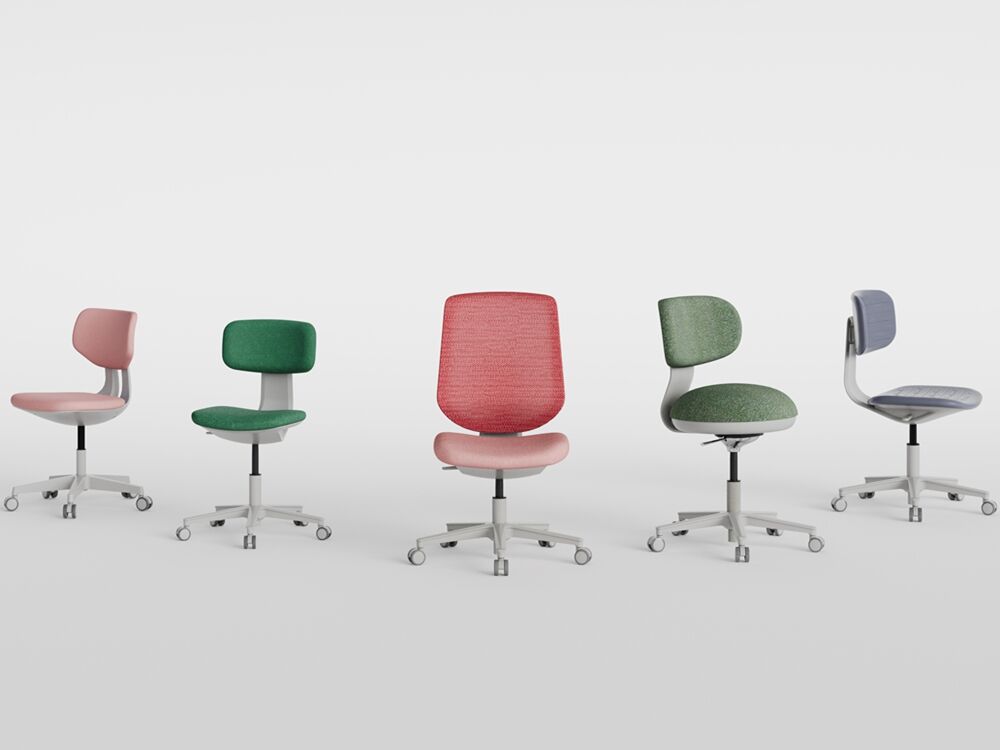
Why Ergonomic Mesh Chairs Are Ideal for Office Comfort
Breathability for All-Day Comfort
Breathable mesh chairs considerably elevate office comfort by offering superior airflow compared to traditional upholstered chairs. The mesh fabric allows air circulation, minimizing sweat and discomfort during long work hours. According to studies, using breathable materials in office chairs can enhance focus and productivity by creating a more pleasant working environment. These ergonomic mesh chairs are often uniquely designed to promote ventilation, maintaining a cool and comfortable posture throughout the day.
Lumbar Support and Posture Alignment
Ergonomic mesh chairs are equipped with integral lumbar support that helps maintain the natural curve of the spine, which is crucial for preventing back pain. Research indicates that proper posture has a positive impact on overall health outcomes and can significantly reduce fatigue, making ergonomic chairs a worthwhile investment. The adjustable lumbar support in these chairs allows users to customize the fit according to their individual body shape and sitting preferences, enhancing comfort and posture alignment.
Versatility for Various Desk Setups
The versatility of ergonomic mesh chairs makes them ideal for a range of desk setups, whether it’s a home office or a corporate environment. These chairs can easily adapt to different desk heights and types, including standing desks and traditional setups. Their lightweight design and maneuverability also make them suitable for collaborative workspaces, allowing easy movement and flexibility in reconfiguring work areas as needed. This adaptability is a key reason why such chairs are preferred in various professional environments.
Essential Features of the Best Ergonomic Mesh Chairs
High-Quality Mesh Material Durability
High-quality mesh materials are a hallmark of long-lasting office chairs. This type of mesh can endure daily wear and tear better than standard fabrics, proving to be a cost-effective investment over time. In fact, some mesh chairs are tested and guaranteed to last up to 10 years under typical office conditions. Additionally, the best ergonomic office chairs utilize breathable mesh that resists sagging, ensuring ongoing support and comfort. Such durability not only ensures financial savings but also supports long-term health benefits by maintaining reliable ergonomic support.
Adjustable Armrests and Seat Height
Adjustable armrests and seat height are crucial for personalized ergonomic adjustments, enhancing comfort and reducing strain. By allowing customization for different body types, these features help users achieve optimal desk posture and minimize the risk of musculoskeletal disorders. With multiple armrest positions, users can alleviate strain on their shoulders and neck, significantly enhancing the ergonomic experience. The ability to modify seat height is equally vital as it accommodates variations in desk types and user heights, promoting healthier sitting postures for every individual.
Weight Capacity and Stability
The weight capacity and stability of an ergonomic office chair are essential considerations for ensuring comfort and safety. Understanding a chair's weight limit is critical when selecting a model suitable for all users in an office environment. Stable chairs equipped with a broad base can prevent tipping hazards, providing both safety and assurance during long working hours. Before purchasing, reviewing stability ratings and user feedback can effectively aid in choosing a chair that satisfies the highest standards of both comfort and safety.
Adjusting Your Mesh Chair for Maximum Ergonomic Support
Setting the Correct Seat Height
Adjusting your mesh chair's seat height is pivotal for maintaining ergonomic sitting posture and leg positioning. Ensuring your feet are flat on the ground is essential to avoid leg discomfort and promote healthy blood circulation, which is crucial during long sitting hours. Industry recommendations state your knees should be level with or slightly below your hips, contributing to better posture and reduced strain on your lower back.
Customizing Lumbar Support
Personalizing lumbar support on your mesh chair is vital for ergonomic alignment and back strain relief. By fitting the support to your lower back curvature, you can significantly reduce potential strain and discomfort. Tailoring the lumbar support to your body's shape helps maintain natural posture, which is supported by articles from health experts that emphasize its importance in minimizing lumbar region discomfort.
Optimizing Tilt and Recline Functions
Understanding and utilizing your chair's tilt and recline functions allow for optimal ergonomic optimization by shifting body weight and relieving pressure points. Setting the right tilt angle enhances comfort and mitigates fatigue during long work hours. Research underscores that proper recline usage can improve circulation and alleviate back pain, offering a viable strategy to enhance long-term sitting comfort.
Maintaining Your Ergonomic Mesh Office Chair
Cleaning and Care Tips for Mesh Fabric
Proper maintenance of your mesh office chair ensures a clean and hygienic workspace, promoting longevity and reducing allergens. Regular cleaning can significantly prolong the life of the mesh fabric, which is essential for maintaining its integrity and appearance. Here are some effective cleaning tips to keep your ergonomic mesh chair in excellent condition:
- Use a mild soap and water solution to gently clean the fabric, avoiding harsh chemicals that might weaken the material.
- Employ a vacuum with a brush attachment to remove dust and debris, which helps prevent buildup and keeps the chair looking new.
- Avoid excessive moisture during cleaning to maintain the structural integrity of the mesh material.
By following these simple steps, you can ensure your chair remains in optimal condition, providing ergonomic support consistently.
Checking and Tightening Adjustable Components
Routine checks on your office chair's adjustable components are crucial for maintaining its ergonomic integrity and ensuring long-term support. Regularly inspecting and tightening these parts can prevent premature wear and enhance the chair’s performance. Consider the following steps:
- Inspect the screws and connections and tighten them as needed to prevent instability.
- Schedule maintenance checks every three months, as recommended by experts, to ensure the chair's safety and optimal function.
- Be attentive to any signs of looseness or wear in the armrests, seat adjustment levers, or back support mechanisms.
Consistent maintenance not only extends the life of your chair but also maximizes comfort and safety during long periods of use.
When to Consider Chair Replacement
Recognizing the signs of wear and tear in your ergonomic office chair is essential for deciding when a replacement is necessary. Common indicators include noticeable sagging, odd noises, or a decline in comfort. Here are some key points to consider:
- Be vigilant for signs such as a drooping seat or creaky adjustments, which often signal the end of a chair's functional lifespan.
- Follow manufacturer guidelines on durability to maintain optimal health and ergonomic posture, since outdated furniture can lead to discomfort or injury.
- Investing in a new chair when necessary can enhance productivity by ensuring adequate support and comfort for the user.
Replacing a worn-out chair is not just about aesthetics but also about health, as a well-functioning ergonomic chair promotes better posture and efficiency.









